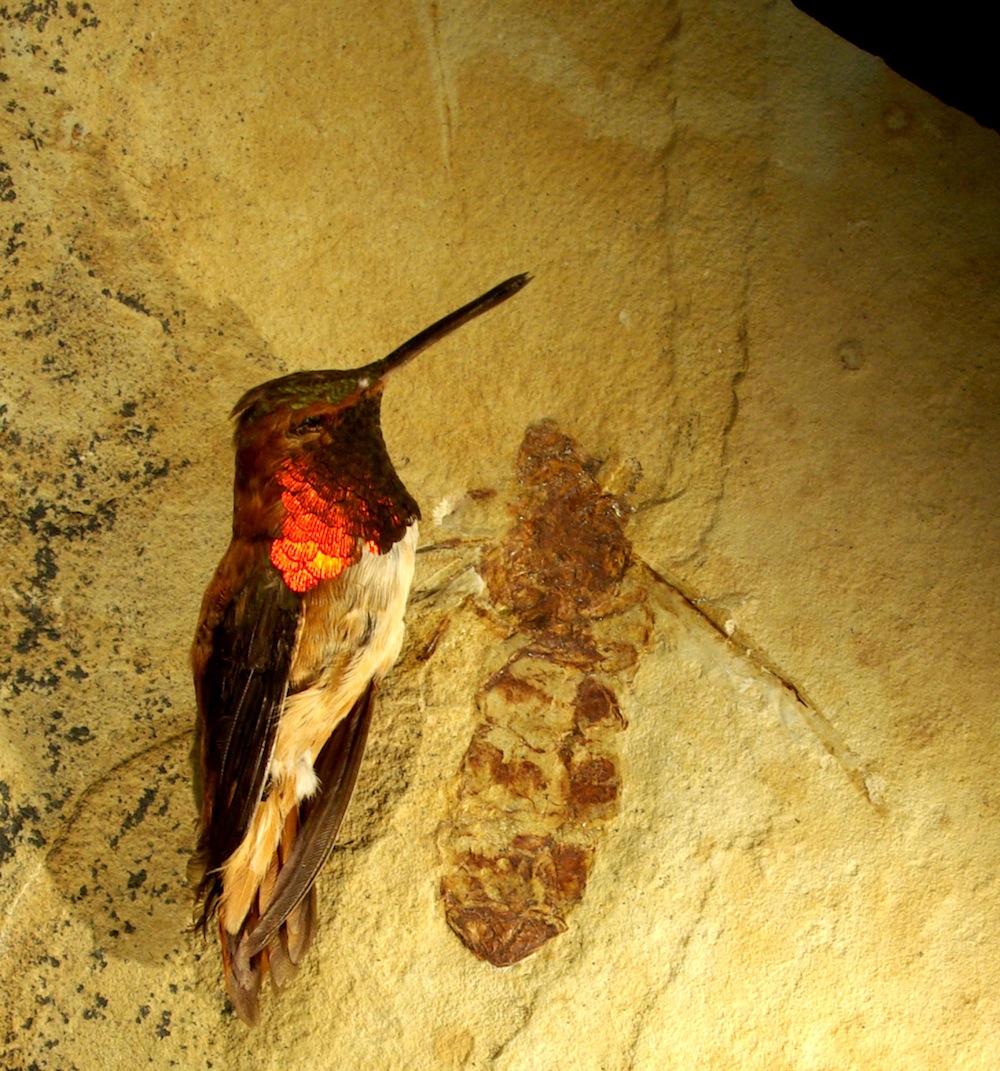'Monstrously Big Ant' Fossil Found in Wyoming

Almost 50 million years ago, ants the size of hummingbirds roamed what is now Wyoming, a new fossil discovery reveals. These giant bugs may have crossed an Arctic land bridge between Europe and North America during a particularly warm period in Earth's history.
At about 2 inches (5 cm) long, the specimen is a "monstrously big ant," said Bruce Archibald, a paleoentomologist at Simon Fraser University in British Columbia who reported the discovery today (May 3) in the journal Proceedings of the Royal Society B. Though fossils of loose giant ant wings have been found before in the United States, this is the first known full-body specimen.
The fossil ant is from a well-known fossil site in Wyoming called the Green River Formation, but it had been sitting in a drawer at the Denver Museum of Nature and Science, Archibald said. When a curator showed him the fossil, Archibald said, he knew he was looking at something exciting. [Image of the giant ant fossil]
"I immediately recognized it and said, 'Oh my god, this is a giant ant and it looks like it's related to giant ants that are known from about this time in Germany.'"
One living ant species, Dorylus wilverthi, has queens that reach the size of this ancient ant, though Titanomyrma was big all over while D. wilverthi gets its size from an abnormally swollen abdomen, Archibald said.
Archibald dubbed the new ant Titanomyrma lubei -- "titan" for its size, "myrma" for the Greek, "myrmex," or ant, and "lubei" for the fossil collector who discovered the specimen, Louis Lube. The burning question, however, was how giant ants ended up on both sides of the Atlantic Ocean.
Monster ant
Sign up for the Live Science daily newsletter now
Get the world’s most fascinating discoveries delivered straight to your inbox.
Ants are tough bugs -- some can even create rafts out of their own bodies to survive floods. But a look at modern large ants showed Archibald and his colleagues that T. lubei very likely needed a warm climate to live, similar to modern-day giant ants. For instance, D. wilverthi lives in equatorial Africa. Other ants bigger than about an inch (3 cm) long are spread across tropical areas of South America, Southeast Asia and Australia. [Infographic: The Life of an Ant]
Likewise, ancient giant ant fossils have been found in Europe in areas that were tropical during the early part of the Eocene, an epoch that lasted from 56 million to 34 million years ago, a time when the continents were closer together and the sea level was low: "You could have walked from Vancouver to London across dry land," Archibald said.
But to cross the continents, you still had to traverse the Arctic. Back then, the Arctic was much warmer than it is today, a temperate zone rather than a winter wonderland.
An open Arctic for ants
"Temperate" would have been too chilly for the giant ants, however. The key to the ants' march, Archibald and his colleagues found, were relatively brief periods in which temperature shot up enough to make the Arctic passable. These periods, which lasted a few hundred thousand years each, may have been driven by the release of carbon dioxide from sediment.
The warm periods would have brought the average temperature in the coldest Arctic months up to 46 degrees Fahrenheit (8 degrees Celsius), a survivable temperature for the tropical ants.
The researchers aren't sure whether the ants started in Europe and spread to North America or the other way around. University of Bonn paleoentomologist Torsten Wappler, who was not involved in the study, is working to classify the various species of ancient giant ants and describe how they lived. Some fossils preserve bits of organs, including stingers, genitalia and stomachs, Wappler told LiveScience.
"Now we can compare this North American species with the European ones," Wappler said. "That was not possible before." The comparison may shed light on the bugs' origin.
You can follow LiveScience senior writer Stephanie Pappas on Twitter @sipappas. Follow LiveScience for the latest in science news and discoveries on Twitter @livescience and on Facebook.

Stephanie Pappas is a contributing writer for Live Science, covering topics ranging from geoscience to archaeology to the human brain and behavior. She was previously a senior writer for Live Science but is now a freelancer based in Denver, Colorado, and regularly contributes to Scientific American and The Monitor, the monthly magazine of the American Psychological Association. Stephanie received a bachelor's degree in psychology from the University of South Carolina and a graduate certificate in science communication from the University of California, Santa Cruz.









